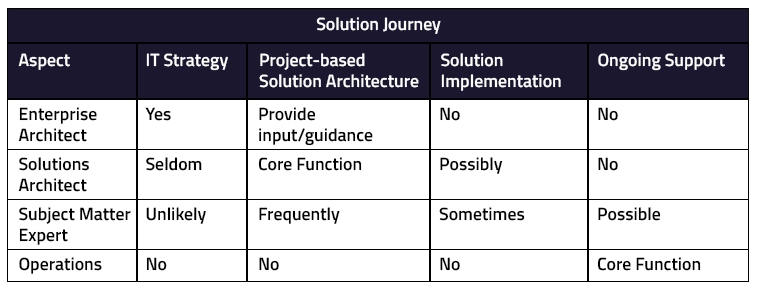In the ever-evolving realm of information technology, the role of an Amazon Web Services Solutions Architect has experienced a profound transformation over the years. As the IT landscape continually undergoes radical shifts and technological advancements, professionals in this field must adapt and evolve. This article delves deeper into the multifaceted journey of an AWS Solutions Architect, exploring the nuanced changes and challenges that have shaped this role into what it is today.
The Foundation of Expertise
The trajectory towards becoming an AWS Solutions Architect typically commences with a strong foundation in IT. Many professionals in this role have navigated the familiar path of providing first and second-line support, which grants them invaluable exposure to a wide array of hardware and software platforms. These initial experiences lay the groundwork for what follows.
Transitioning into an engineering role is the logical next step for individuals on this journey. It is during this phase that elements of design-related activities come to the forefront. Those with a background in software development may embark on a slightly different route but share the same overarching goal: to become a proficient AWS Solutions Architect.
Two Common Paths: Engineering and Development
In the IT industry, two common career paths emerge, each influenced by an individual’s background in either software development or infrastructure. Architects, traditionally, have diverse backgrounds, having worked as engineers or software developers in their earlier roles.
The path chosen often dictates the specific skillset and perspective that an architect brings to the table. For instance, an architect with a software development background may prioritize considerations related to code efficiency and application architecture, while an architect with an infrastructure background is likely to emphasize scalability, reliability, and infrastructure optimization.
Traditional Architecture Frameworks: Guiding Principles
For many years, the role of an architect has been closely aligned with established frameworks such as TOGAF (The Open Group Architecture Framework) and BCS (British Computer Society). These comprehensive frameworks encompass various domains of architecture, including business architecture, application architecture (encompassing data, information, and technology architecture), and enterprise architecture.
Responsibilities within these domains are typically divided to ensure a structured and efficient approach to architecture, as depicted in the table below:

In practice, as one progresses into an architect role, there’s often a gradual separation from hands-on technical work. However, architects are expected to retain a deep understanding of technology and roll up their sleeves when needed, especially in software development projects where their intervention may be required.
Balancing Guidelines and Constraints
In the world of architecture, there exists a concept often referred to as “ivory-tower” architecture. This is when architects or architecture teams develop rigid principles and guidelines that may be disconnected from the reality faced by engineers and subject matter experts. These binding guidelines can sometimes hinder the successful implementation of solutions, leading to workarounds that circumvent these guidelines.
Finding the right balance between providing architectural guidance and allowing for flexibility in the face of real-world constraints is a challenge that modern AWS Solutions Architects must navigate. The goal is to strike a balance that promotes innovation while maintaining adherence to best practices.
The Cloud-Native Imperative
In the context of infrastructure, traditional Solution Architecture has for many years revolved around eliciting functional (what the system should do) and non-functional (performance, availability, recoverability, integrity, and security) requirements from key stakeholders. These requirements have historically been combined with limited software architecture understanding, which has evolved over the years.
Traditionally, architectural paradigms have transitioned from monolithic architectures, consisting of a single package comprising all components required to operate an application, to client-server architecture, where server and client applications are released as separate packages. This evolution further morphed into 3-tier, n-tier, or distributed monoliths, depending on the complexity of the application.
In the cloud-native world, this view of architecture encounters new challenges. While functional requirements still demand a deep understanding of what the solution ‘should do,’ the non-functional aspects mentioned above take on a different form in the Cloud.
Behind the software-driven approach to compute, storage, and network infrastructure lies a fundamental shift in how these components are provisioned, recovered, scaled, and integrated. In this environment, architects are no longer limited to designing solutions; they are also expected to specify how different components integrate and can be deployed—a concept known as “Infrastructure as Code” (IaC).
Shifting Focus: Applications Over Infrastructure
As the cloud-native world redefines the architectural landscape, there is a noticeable shift in focus. Architects are increasingly required to move beyond the intricacies of infrastructure and delve deeper into the realm of applications and software. The modern AWS Solutions Architect must possess a robust understanding of modern application platforms and how they fit into a customer’s application modernization strategy.
What was once considered the domain of software developers has now become an integral part of a Cloud-native architect’s skill set. For instance, how many infrastructure-centric solution architects could describe the benefits of the 12-Factor app methodology?

Adapting to New Factors
The shift towards a cloud-native landscape introduces several additional factors that architects must consider:
- Decoupled Applications: Architectures are increasingly moving towards decoupled applications, emphasizing modularity and scalability. Architects must assess whether it is possible to break apart monolithic systems into more flexible components.
- Microservices Adoption: Evaluating whether a transition to microservices is a viable and beneficial option for a given application.
- Cloud Services Integration: Architects must be well-versed in cloud services and how to seamlessly integrate them. Event-based architectures, utilizing messages, queues, and service buses, play a pivotal role in stitching together various cloud services.
- Serverless Computing: Understanding the merits of serverless computing and Platform as a Service (PaaS) models and when they are suitable for specific use cases.
The Rise of Infrastructure as Code (IaC)
A pivotal evolution in modern architecture is the concept of Infrastructure as Code (IaC). This paradigm shift allows architects to define infrastructure using code, treating infrastructure elements as software artifacts. The code-centric view of deploying infrastructure is rapidly gaining prominence across cloud platforms.
Architects are now responsible for specifying deployment methods for applications and understanding how cloud services facilitate this process. Configuration control and consistency have also evolved to encompass infrastructure, enabling a more streamlined and efficient approach to managing infrastructure elements.
This transition would have been considered unthinkable in the ‘infrastructure-centric’ worldview of solutions architects just a few years ago. In that era, project timelines had to account for lengthy procurement and delivery timescales, often extending into weeks or even months. Today, solution architects are expected to possess a combination of skills that enable them to design, build, and lead the execution of solutions in a much more agile and efficient manner.
Principles of Architecture
Amidst these sweeping changes, it is reassuring to note that the enduring principles of good architectural design remain steadfast in the realm of cloud-native architecture. Major cloud providers, including AWS, Azure, and Google Cloud, offer well-architected frameworks and reference designs.
For example, AWS provides its comprehensive Well-Architected Framework, which encompasses architectural best practices in areas such as operational excellence, security, reliability, performance efficiency, and cost optimization. Similarly, Azure offers the Cloud Adoption Framework, guiding how to adopt Azure effectively.
Within these frameworks, architects can often find repeatable patterns and design principles that can be applied to solve specific architectural challenges. These frameworks serve as invaluable resources for architects striving to align their designs with best practices and industry standards.
Conclusion
As businesses undergo digital transformation, their consumption of IT systems and services undergoes a parallel evolution. Simultaneously, major cloud providers release a staggering array of features and services every year, a pace that far surpasses the traditional hardware development cycles of the past.
Those entrusted with the responsibility of architecting solutions in this dynamic environment must continually adapt and equip themselves with the skills needed to thrive in this new landscape. The role of an AWS Solutions Architect has undeniably evolved over the years, shaped by the forces of technological innovation and the demands of the cloud-native era.
Embracing this evolution and remaining well-versed in the ever-changing AWS ecosystem is essential for architects tasked with designing solutions that meet the evolving needs of businesses in the modern IT landscape. By doing so, AWS Solutions Architects can navigate the complexities of this transformative journey and continue to deliver value in an industry defined by perpetual change and innovation.
Enroll in Cognixia’s cloud computing with AWS training course and upgrade your skill set. You can influence your career and future with our hands-on, live, highly interactive, and instructor-led online course. You may benefit in this competitive market by providing an extremely user-friendly online learning experience. We will assist you in improving your knowledge and adding value to your talents by offering engaging training sessions.
Cognixia’s AWS cloud computing certification course discusses the basics of AWS & cloud computing, then moves on to more advanced concepts, like service models (IaaS, PaaS, SaaS), Amazon Private Virtual Cloud (AWS VPC), and more.

